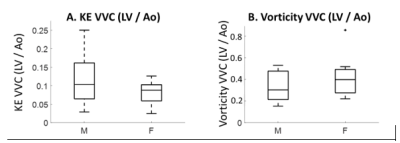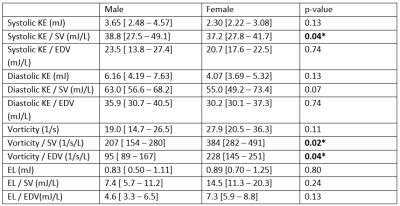Cody Johnson1, Ryan Pewowaruk2, David Rutkowski1, Amanda Wolfinger1, and Alejandro Roldán-Alzate1,2,3
1Radiology, University of Wisconsin-Madison, MADISON, WI, United States, 2Biomedical Engineering, University of Wisconsin-Madison, MADISON, WI, United States, 3Mechanical Engineering, University of Wisconsin-Madison, Madison, WI, United States
1Radiology, University of Wisconsin-Madison, MADISON, WI, United States, 2Biomedical Engineering, University of Wisconsin-Madison, MADISON, WI, United States, 3Mechanical Engineering, University of Wisconsin-Madison, Madison, WI, United States
The
sex difference found in LV flow were not found in aortic flow. The VVC of
LV-to-aortic flow was similar for men and women. Dimensional analysis explained
the differences in LV flow as it accounted for differences in cardiac output
and ventricular volume.


